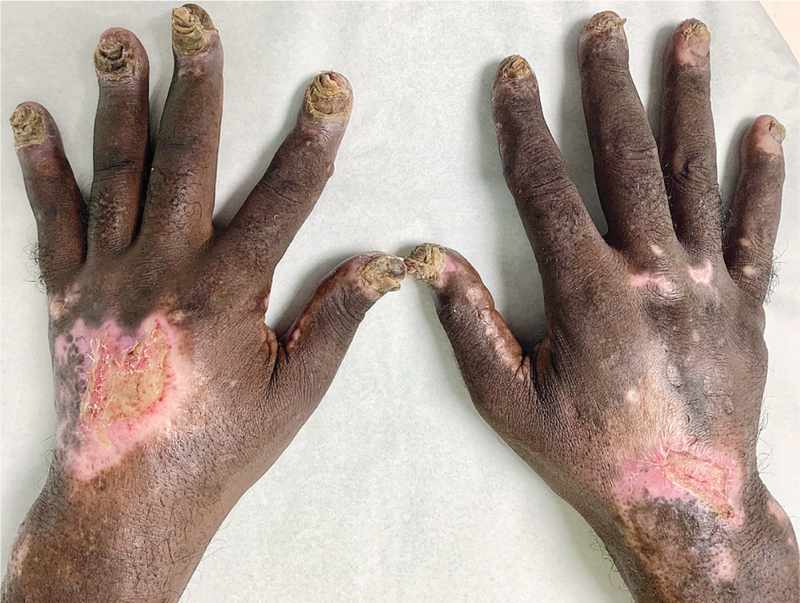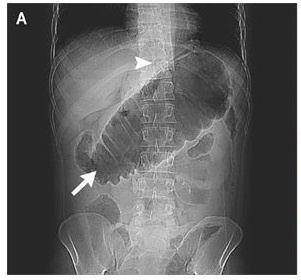This article is an answer to the Case – Crusted Erosions, Atrophic Scars and Fingernail Thickening
A 24-hour urine sample showed an elevated level of uroporphyrins (558 μg [672 nmol]; normal range, 0 to 24 μg [0 to 28 nmol]). A diagnosis of porphyria cutanea tarda was made.
Porphyria cutanea tarda is due to acquired or inherited uroporphyrinogen decarboxylase deficiency. Risk factors for acquired disease include:
- alcohol use
- hepatitis C infection
- human immunodeficiency virus infection
- smoking
- certain medications
Treatment for hepatitis C virus infection with sofosbuvir–velpatasvir was initiated, and the patient was advised to avoid exposure to the sun. At follow-up 4 months after presentation, the patient’s skin lesions and fingernail changes had abated. He had only minimal residual blistering on his forearms.
References
- Wiebke Muschalek, Matthias A. Hermasch, Pamela Poblete‐ Gutiérrez, Jorge Frank. (2022) The Porphyrias. JDDG: Journal der Deutschen Dermatologischen Gesellschaft 20:3, 316-331.
- Wiebke Muschalek, Matthias A. Hermasch, Pamela Poblete‐ Gutiérrez, Jorge Frank. (2022) Die Porphyrien. JDDG: Journal der Deutschen Dermatologischen Gesellschaft 20:3, 316-333.


